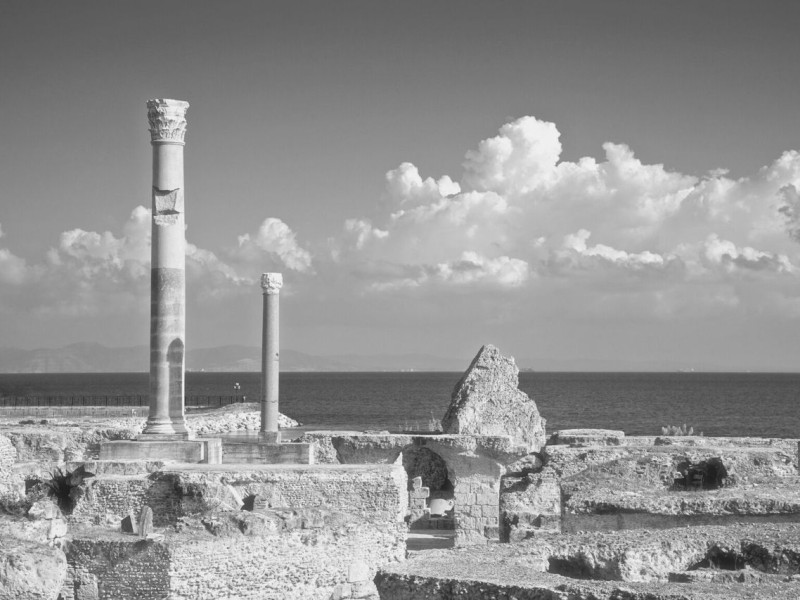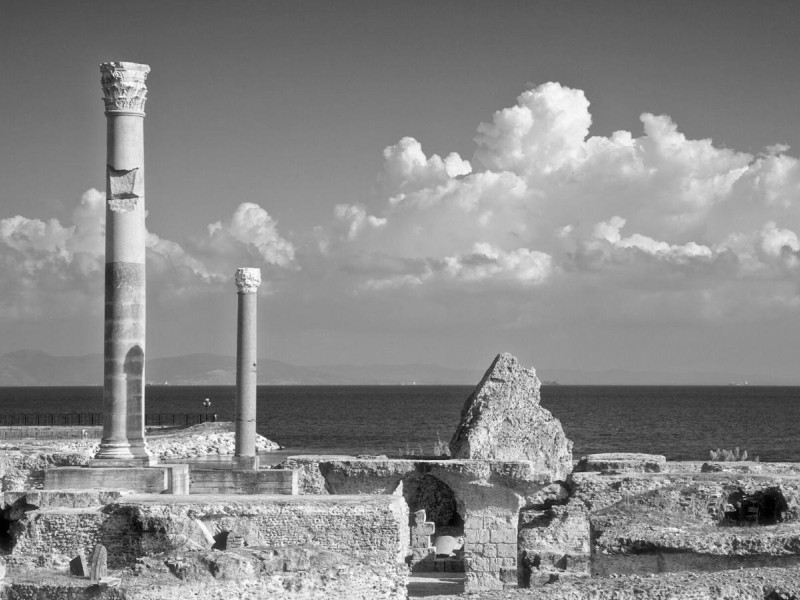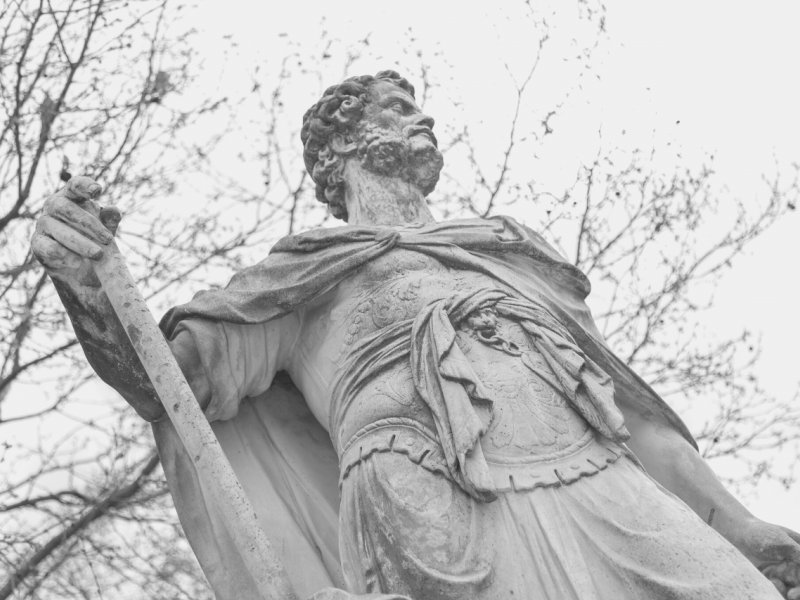Carthage
Carthage was a Phoenician city in North Africa, which was located near the modern city of Tunis. The original name of the city was probably Byrsa (the "citadel").
Carthage was said to have been founded by Dido, sometimes called Elissa, a Phoenician queen in Tyre. There is some confusion over who her father was. Dido fled with her sister Anna from Tyre, when her brother Pygmalion murdered her husband Sychaeus (she had actually married her uncle).
When Aeneas landed in Carthage, Venus (Aphrodite) made Dido fall in love with her son (Aeneas). Aeneas would have married Dido, but the messenger god Mercury (Hermes) had to tell Aeneas that he was not fated to marry Dido and live in Carthage, because his new home was in Italy. When Aeneas left Carthage, Dido was so devastated that she committed suicide. As Aeneas' ships sailed away from the city, the hero saw the burning of a large funeral pyre.
Later on, Aeneas met her shade in the Underworld, and she was reunited with her husband (Sychaeus) and she refused to acknowledge Aeneas' presence; apparently she had not forgiven him for leaving her.
Most of the legends about Aeneas and Dido came from the Roman epic, the Aeneid, written by Vergil, and the poem called Metamorphoses by Ovid. However, it was believed that in an earlier Roman source, Dido killed herself on a funeral pyre in order to escape a marriage to Iarbas or Hirbal, a Libyan king who would invade Carthage if the queen did not marry him. Obviously, Vergil changed the legend to suit his epic. (See the Aeneid about Aeneas and Dido.)
Historically, Carthage was a great maritime city, known for its navy. Also, Carthage was a city-state, governed by a system of oligarchy, not ruled by a monarch. The Carthaginians founded cities in Sicily, Sardinia, Corsica and Spain.
Their traditional enemies were the Greek cities in Sicily, including Syracuse, as well as Rome itself. Carthage and Rome were involved in three wars, known as the Punic Wars. Hannibal was the most distinguished general in the Second Punic War, who defeated several Roman armies in Italy, but he finally lost the war in the Battle of Zama, a site south-east of Carthage, in 202 BC.
Related Information
Name
Carthage, Carthago (Latin);
Καρχηδών (Greek).
Founder
Dido
Rulers
Dido.
By Jimmy Joe







